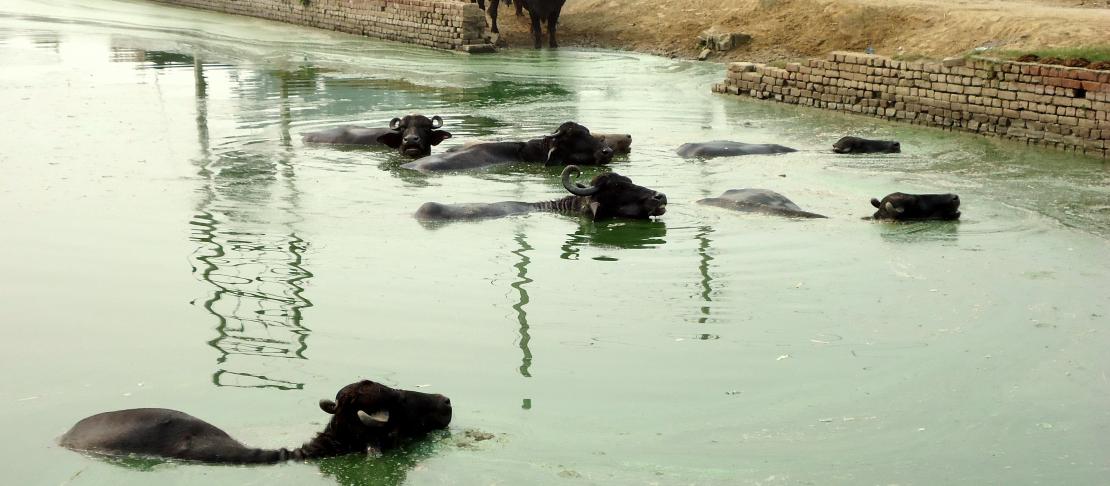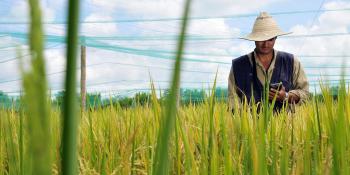Capturing floodwater for dry-season irrigation in Indian Punjab

by Sanmugam Prathapar
The Indian Punjab is characterized by fertile soils and high population density, but is semi-arid in climate. Having been endowed with deep alluvial aquifers with high storage capacity, the region has the capacity to store vast amounts of water just below the cropping lands, providing enormous advantages in terms of irrigation management and buffering against climate extremes. The region is also home for rice-wheat systems, which ensures food security for many states across India.
Groundwater irrigation in Punjab has grown rapidly since 1970s, but groundwater level decline is threatening longevity of irrigated agriculture in this part of the Indo-Gangetic plain. Natural recharge under current land use is low, and the potential for Managed Aquifer Recharge (MAR) is also low due to the shortage of surplus water and suitable land to install MAR. For example, in the Sangrur district of Punjab, irrigation requirement (in excess of rainfall) during rice and wheat seasons are 268 mm and 259 mm respectively, but there is hardly any land where MAR may be installed. However, there are aspects related to rainfall and land use, which warrant adoption of rainfall harvesting and artificial recharge practices in the Sangrur district. Approximately 624 km2 of area within the district is not under agriculture. For such partially covered ground catchments, the runoff coefficient range is from 0.3 for soil surface to 0.9 for roof surface. Hence, rainfall runoff from non-agricultural land can be channeled into local ponds for artificial recharge. Such ponds are generally available in the close vicinity of most villages. Although the average annual rainfall is 590 mm, its annual variation had been wide. From 1977 to 2007, it has ranged between 121 mm in 2002, to 1012 mm in 1983. Most of the rainfall is received with three months, and far exceeds the evaporative demand during this period. In summary, although MAR potential is not very high in Punjab, there is still scope to increase recharge to groundwater, using village ponds.
Since village ponds are always used by buffaloes, villagers require a certain depth of water to be maintained in these ponds. As a part of the CGIAR Research Program on Climate Change, Agriculture and Food Security (CCAFS) initiative, researchers from the International Water Management Institute (IWMI) and Punjab Agricultural University plan to install recharge trenches along the banks of village ponds in such a way that a minimum water level is always maintained, while excess storage in monsoon is allowed to by-pass impermeable soil layers, and recharge the aquifer. Trials are planned for the monsoon of 2012.
More information
Related story: New options for flood control could help during dry spells
Read more about Climate Change, Agriculture and Food Security work in South Asia.
This blog story was written by Sanmugam Prathapar, International Water Management Institute


